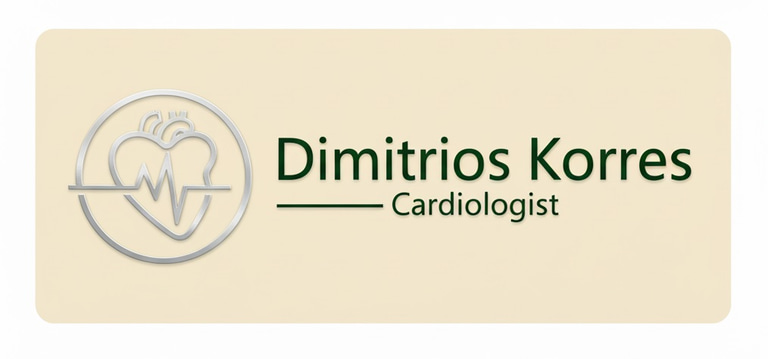High Cholesterol
Things we should know about dyslipidaemia
Dimitrios Korres
9/17/20254 min read


Dyslipidaemia: What it is, how it's treated and what it means for our daily life
Introduction
Cholesterol is a word we have all heard. Most of us know that "high cholesterol" signals a problem, without always understanding what this means for our health. Dyslipidaemia is a condition where lipids (the "fats" in the blood) are at unhealthy levels. It doesn't cause pain or symptoms, but it increases the risk of developing cardiovascular diseases: heart attacks, strokes and arterial damage.
Dyslipidaemia concerns all of us. Just consider that the first diagnosis is often made by chance, during a routine check-up. From there, the conversation begins: what to do, how seriously to take it and how low we need to get our cholesterol levels.
What European Guidelines Say
The most recent guidelines from the European Society of Cardiology and the European Atherosclerosis Society set clear frameworks for how dyslipidaemia should be treated:
Risk Assessment
Not all people are the same. One person has a higher risk due to age, another because they have diabetes, hypertension, or a family history. Depending on the overall profile, each person is categorized as "low," "moderate," "high," or "very high risk." This classification determines how low cholesterol levels must drop.
The Main Target is LDL-Cholesterol
The so-called "bad cholesterol" is what sticks to the blood vessels and forms atherosclerotic plaques. The lower it is, the lower the risk. For those in the very high-risk category, the guidelines demand much lower values than in the past.
Lifestyle First
Changes in diet and physical activity are the first line of defense: fewer animal fats, more fruits and vegetables, fish instead of meat, regular walking or exercise. These can significantly reduce cholesterol.
Medication Follows
If lifestyle changes are not enough, the guidelines recommend medication. Statins are the first step. If they are insufficient, other preparations are added, and in more difficult cases, newer treatments are used.
More Attention to Triglycerides and Lipoprotein(a)
Beyond LDL, science recognizes other factors that influence risk. High triglycerides or elevated lipoprotein(a) are now considered elements that must not be ignored.
The Greek Reality
In theory, everything seems clear. In practice, however, there are specific peculiarities in Greece.
Financial constraints: Newer medications are very expensive and are not always available or easily reimbursed. Thus, it is not always realistic to apply the most "aggressive" treatments.
Quality of life: Many patients struggle with medication side effects, such as muscle pain or insomnia. This requires dialogue with the doctor, not blind adherence to numbers.
Access to preventative tests: Not everyone gets regular check-ups. Often, the problem is detected late, after symptoms have already appeared.
That is why it is important not to treat cholesterol as "just a number on paper," but as part of our overall health.
Examples from Daily Life
To better understand what all this means, let's look at a few simple stories:
Mr. Giannis, 58 years old
He is a smoker and overweight. He was found to have high LDL. His doctor, knowing he has multiple risk factors, set a goal to significantly lower cholesterol, likely with medication from the start.
Ms. Eleni, 43 years old
She has elevated cholesterol but no other risk factors. In her case, the effort begins with diet and exercise, without immediate medication. If she doesn't see improvement in a few months, then the discussion about drug therapy begins.
Mr. Nikos, 65 years old
He has already had a heart attack. For him, the target is very low and definitely requires drug therapy with more than one combination, in addition to lifestyle changes.
Ms. Maria, 35 years old
Her father died young from heart disease. Her LDL is not very high, but because she has a strong family history, she may need stricter monitoring and earlier intervention.
The Different Approaches
In the scientific community, there is a constant debate. On the one hand, the guidelines say: "The lower, the better, especially for high-risk individuals." On the other hand, there are voices warning that excessive reduction may not always be necessary or safe.
Some of the objections being discussed:
Could very low cholesterol levels cause problems that have not yet been sufficiently demonstrated?
How realistic is it to ask every person in Greece to follow exactly the same guidelines as someone living in another country, with a different health system and different capabilities?
How do we balance the goal of the numbers with the patient's quality of life?
These questions do not negate the guidelines, but they help us remember that medicine is not a mathematical formula; it is a doctor-patient relationship.
What We Can Do
Regardless of the details of the guidelines and the discussions around them, there are practical steps we can all take:
Regular Check-ups: A simple blood test can show if there is a problem. After 40, it's good practice to do one annually.
Mediterranean Diet: Less meat, fewer processed foods, more legumes, fruits, vegetables, and olive oil.
Daily Exercise: Even half an hour of walking per day, may make the difference.
No Smoking, Less Alcohol: Two habits that threaten health.
Discussion with Your Doctor: Not just about what the test paper says, but also about how we feel, what we can tolerate and what solutions are realistic.
Conclusion
Dyslipidaemia is a "silent" threat, but it is absolutely manageable. European guidelines provide a clear direction: controlling LDL, making lifestyle changes, and using medication where needed. On the other hand, everyday life shows us that there is no one-size-fits-all solution.
The right approach lies somewhere in the middle:
Taking the guidelines seriously and understanding the risk.
But not forgetting that every person is unique, with their own needs, endurance, and capabilities.
